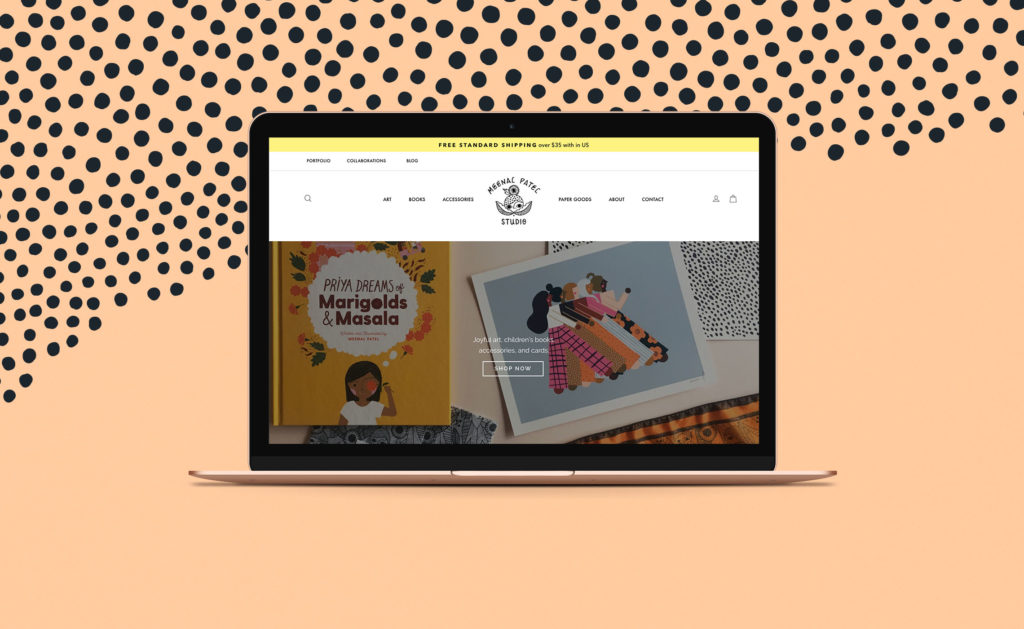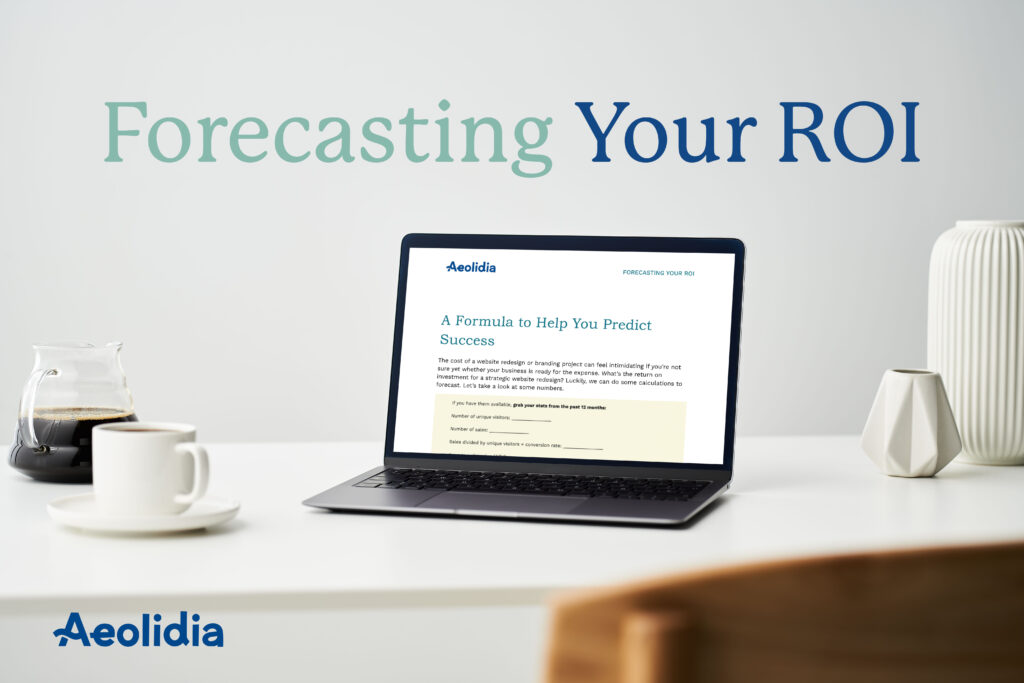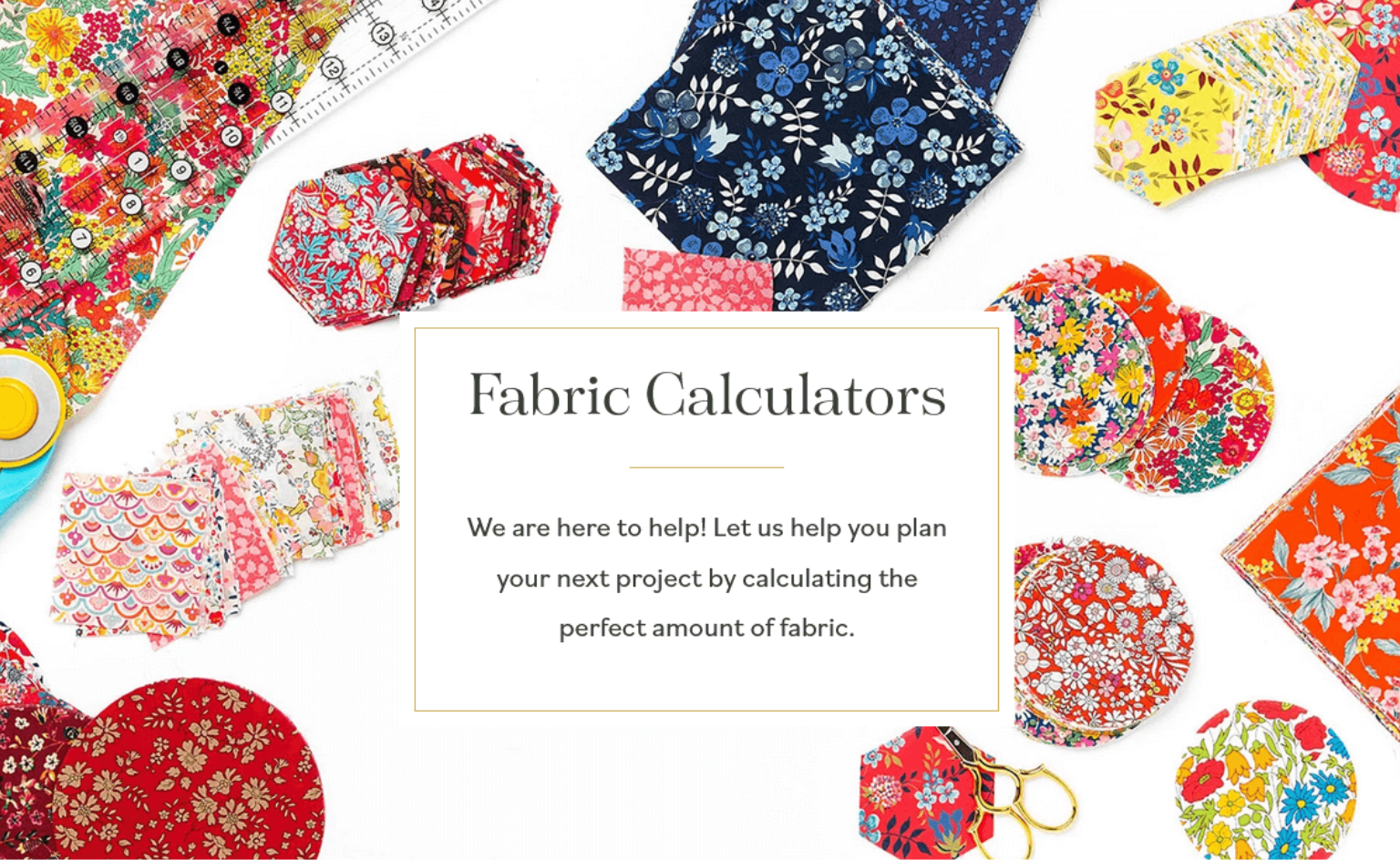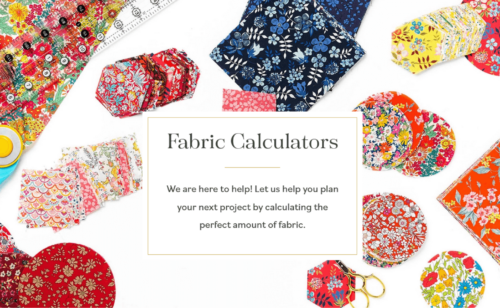My Best Strategy For a New Product-Based Business

Are you selling your product in person or on Etsy and thinking about setting up your own ecommerce shop? Or maybe you’re ready to start a business, but haven’t taken the steps to set up an online presence yet. Let’s talk about how to get started, and make sure you’re putting your best foot forward online with our product-based business strategy.
The best product-based business strategy
We have been talking about diversifying and that got me thinking about what my specific strategy would be for a new business. If I was starting a product-based business right now, this is what I would personally do.
Brand the business
I would develop a dream customer profile, and figure out what my business offers that not even my closest competitor does.
I’d work on brainstorming a business name that would appeal to my dream customers, and that was memorable and unique. I’d do a trademark search to be sure the name wasn’t in use by another business in the same field. As soon as it looked safe to use, I’d purchase the domain name (and social media handles), and put a quick “coming soon” web page up to establish that I had a claim on the business name.
Once the name was decided on, I would do whatever business stuff had to be done. This is different in every location, and for different types of business, so I’m not going to offer any specific advice here. I personally would check with my accountant to tell him about the new business and ask him what all I’d need to do to get it legal in my state.
Based on the information I’d been creating about the personality behind my brand, I’d develop a memorable brand identity and design graphics to use everywhere I promote my business.
How to create the logo and brand graphics? If the product business was a whim I was trying out, I have a background in graphic design, and I would probably struggle with this myself for a long time and end up with something good enough. If the business was serious, and I was planning for it to be my full-time livelihood, I would invest in professional graphic design from the start, because I’ve seen over and over how much easier this makes marketing efforts. Email me if this is the stage you’re at.
Think about my pricing
I would work to drop my costs for materials by taking advantage of wholesale and bulk discounts, and work on a pricing strategy that would enable me to sell to wholesale customers in the future and grow my business. Consider how to make pricing work for wholesale.
Plan a marketing strategy
I would choose a handful of ways to sell and promote my work. The ones that would be most likely to work best for my business type. With Shopify, I could set up my shop, and use their multi-channel sales tools to also sell on Pinterest, Twitter, and Facebook.
I would start with a mailing list from day one (in fact, from day negative 40 – I’d want to build excitement in advance of my launch, and get the emails of whoever was interested). I’d set up a rough editorial calendar of what I want to post about and when. I would plan a blog and write a month’s worth of posts in advance.
As a creative product-based business, I would focus most of my social media plan on Instagram, but make sure that my blog was auto-posting to Twitter and Facebook. At least at first, I would set aside time each day to engage on 2-3 social media platforms.
As a person with an existing business, I already have a social media following, and I would leverage that. If you have another business, a blog, or anything else that has a following on the internet, use that to your advantage. If you’re thinking of moving from Amazon or Etsy to Shopify (or setting up a second shop on Shopify), start engaging with your customers right away, as much as your marketplace allows you to, to get them excited about your new brand or website.
If you’re starting from absolute zero, making connections online is going to be important. Start doing that now! Find groups of peers and colleagues and contribute to the discussion. Help people out in preparation for the day you might want some help. Start getting to know the people who may end up being champions of your work in the future.
Preparing my website content
If my startup budget allowed, I would hire a skilled photographer to take styled lifestyle shots of my products. Beautiful photography is key for selling online, and investing in just a few photos for the home page and other parts of the site would be a high priority.
I would make sure my photos were beautiful, with good lighting, views of different angles of the product, and clear detail. I would probably take the individual product photos on white backgrounds myself using the Foldio home lightbox and my iPhone.
I’d write copy for the site, keeping my dream customer in mind and explaining the benefits of my product well. I feel like a pretty decent writer. If I didn’t, I would hire a professional copywriter to help out with the most important parts of the site (the home page, about page, and my flagship product).
If I already had a shop on Etsy or Amazon, I would take the existing information and product descriptions and adjust them for my new shop. It’s likely I would need fewer instructions in my descriptions once they’re not on Etsy, and it’s always a good idea to write up something new for Google, so they don’t see you creating “copies” of your shop multiple places on the internet and think you’re a spammer.
Purchase a domain name and set up a website
I’d purchase my own dot com, and use that everywhere when marketing my business. I would set up a simple shop on Shopify at a low plan level, until I saw enough sales come in to make it worth upgrading. The bar is low at $30 a month, and if I couldn’t make a profit after a few months, I’d need to reevaluate my product and marketing strategy.
I would choose a theme from the Shopify theme store that I liked a lot right out of the box. I would tinker around with the theme settings, adding my logo, changing the fonts and colors, and making it match the design of my brand. Having a custom site designed for my business once it saw some success would be my goal.
I would add all the content I’d been preparing and check that every page on the site was custom to my shop and looked good. I’d get my social media links in there. If I had a marketplace shop, I might import my listings, or use this as a chance to start fresh and get them just right.
I would test my shop myself on desktop, a tablet, and a smartphone and make sure it looked good and worked well on all. Then I’d ask friends or family to search for and purchase a certain thing and I’d ask them to walk through it with me taking notes. Or I’d try User Insights to do the same thing.
Launch with a splash
I’d work to launch with a big splash! I’d use my connections online to ask the people who share my target audience (without being competitors) to share the news about my new shop, and there would be some type of celebration, discount, or giveaway. I would pre-write social media blurbs and blog posts for the people I most wanted to share, making it as easy as possible for them. I would offer to guest post on targeted blogs around my launch date.
I was really impressed by this article on Shopify about getting press for your business, and I’d read through this and make a similar strategy for myself: How Two Friends Turned Up The Heat and Sold $170k Worth of Spicy Honey in 10 Months
I would also be building up to the launch on social media and in my newsletter during the period I was putting the shop together.
Experiment and adjust
After launch I would check sales, stats, and conversions. I’d experiment with what worked well and what was a waste of time, and adjust accordingly. Before abandoning a sales method, I’d see if I could tweak it to do a better job there.
I’d pay close attention to customer comments and feedback and do what I could to make shopping and checkout easier, and to make my promotional posts more appealing and newsletters more interesting. Good feedback would mean I’d do even more of that in the future. Bad or no feedback (combined with no sales) would mean that I needed to improve or be more engaging.
Do you need to move to Shopify?
We’re your team! Contact us today to get our rates and learn more.
Forecasting Your ROI

Aeolidia aims to be a step towards 10x-ing a business, not just a 10% improvement. Is it time for your business to take this step?
4 thoughts on “My Best Strategy For a New Product-Based Business”
Leave a Comment
Related Posts
Let's take your online shop to the next level
The Shopify websites we design have a reputation for substantial improvements to ecommerce conversion rates and online sales. Let's talk!
















Thanks Arianne. These are good points I did not think of. Photography is absolutely key! 100%
I’m so glad this was helpful to you, Clarice!
This is the bee’s knees!
So many helpful tips thank you!
I’m happy to hear it, Katie!